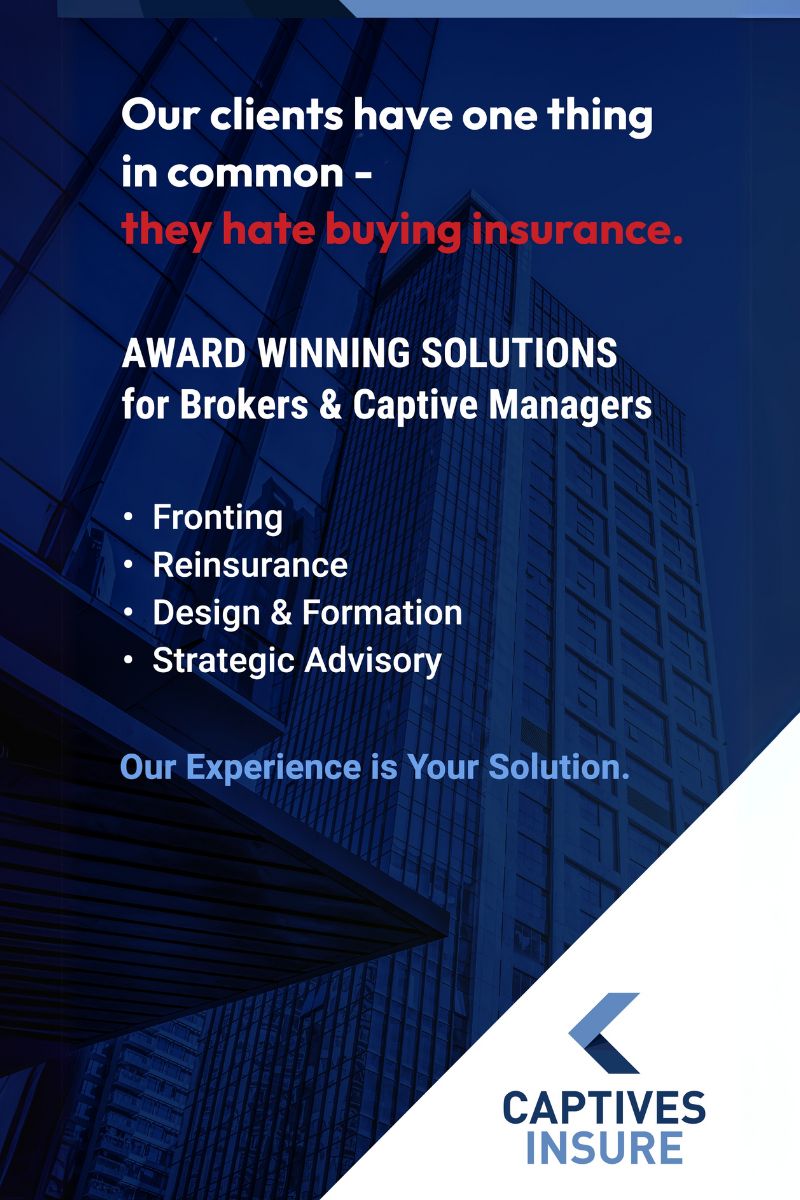Honigman Miller Schwartz and Cohn LLP
Scott Geromette of Honigman Miller Schwartz and Cohn reveals what he believes to be the biggest challenges facing the industry today, and how he is working on getting captives in to Federal Home Loan Banks cooperatives
What was your route into the insurance industry?
My route into the insurance industry was rather direct, which is interesting when you consider the fact that it was not necessarily a conscious decision. I attended college at Columbia University in New York and went to law school at Moritz College of Law at The Ohio State University. Coming out of undergrad and law school, I always planned to return to Michigan because: (i) both my wife’s and my family live here; and (ii) the state, and Detroit in particular, have substantial potential for (re)growth and progress, movements that I wanted to experience and to which I wanted to contribute.
My firm, Honigman Miller Schwartz and Cohn LLP, is generally recognised as the premier business law firm in the state and hires an exclusive outstanding group of summer associates and new attorneys each year. I was lucky enough to be offered a summer associate position in 2008 and, during that summer, I gained valuable exposure to the many exclusive practice areas and departments at Honigman.
While the exposure confirmed my enjoyment of the practice of law generally, it also introduced me to a type of practice of which I was previously unaware. Specifically, I worked on a couple of projects with Bill Cassetta, Bill Hochkammer and Julie Robertson, three of the most respected and foremost experts in the captive insurance industry. In doing so, I witnessed the significant level of interaction and close relationships they shared not only with other service providers, but also with clients.
Those interactions and relationships (which I believe are somewhat unique to the captive business, especially on the legal side), as well as the great reputation and significant practice level of Honigman in the captive context, are what attracted me to the insurance industry.
How has your education in law and politics helped in your career?
I think there is a relatively substantial misconception in the US that the purpose of education is to prepare you for a particular profession. As a result, I think many young students lose perspective and take too literal of an approach to college and grad school classes. In my opinion, the goal of a good education should be to teach students how to think across a broad range of subjects and specialties so the individuals can then take those lessons and apply them in the context of their aspirations. I assure you that on a daily basis, I apply very few of the subject-specific concepts I learned in school. What I do apply regularly are the logic and reasoning skills that were important in all my classes, regardless of the subject.
Furthermore, and perhaps more importantly, I utilise the social and verbal skills that were important both in and out of the classroom. One of the best lessons I learned from a college professor stemmed from the comment, “you can be the most insightful and intelligent person in the world, but if you lack either the willingness to deliver the message or the ability to do so in an effective and articulate manner, what difference does it make?”
As a result, in college, law school and even today, I put quite a bit of effort into developing my verbal skills. In addition, I make an effort to communicate with clients either in person or by phone rather than deferring to email. It is certainly a quick and easy mode of communicating, and I certainly don’t mean to suggest that it doesn’t play a role in my day-to-day activities, but I believe there is a significant added benefit to direct interactions and communications.
What attracted you to a career in captive insurance?
In many other legal practice areas, you deal with clients on a ‘one-off’ basis, usually when issues or matters arise (ie, disputes, deals, etc). In the captive context and especially at Honigman, there is a more comprehensive approach to our representation. That is, we generally serve as general, outside counsel to the captive and assist/advise on a broad range of legal, regulatory, tax and business issues that arise over the life of the captive. In this regard, the captive insurance practice at Honigman was very attractive because: (i) it provides the ability to assist clients in achieving their goals in a way that facilitates long-lasting and personal relationships; and (ii) it exposes me to a broad range of new and challenging issues across various legal specialties.
What is the biggest challenge facing the industry today?
In two words: popularity and responsibility. Historically, the captive industry has been very successful in flying under the radar. I don’t mean that in a sense that they have tried to avoid regulation, but rather that they have largely been these somewhat isolated, self-sufficient and self-regulated vehicles. Captives generally grew out of necessity related to insurance crises and, as a result, the entities and industries most impacted by the crises searched for alternatives. Consequently, the knowledge of and familiarity with captives was relatively limited.
Now, as captives have become more popular, they are sometimes being used for different purposes outside the pure risk management/finance context and, as a result, there exposure has grown. This exposure can be a good and bad thing. On the one hand, it helps increase the profile and strengthens the perception of the alternative risk market as a stable and viable industry. On the other hand (properly or improperly), it can raise questions from legislators or regulators about whether these vehicles are sufficiently regulated or taxed and/or whether they are being used for proper purposes.
There are several problems with this. The first problem is that too often the people raising the questions do not fully understand captives or how they operate and really don’t have a meaningful basis for concern. The second is that whenever there is some, limited basis for concern (ie, a default, IRS ruling, etc), captives are viewed as a collective group and one bad apple can have a perceived spoliation effect on the entire batch.
The final (and perhaps the biggest) problem is that presenting a united front in response to the questions or impending actions is very challenging because captives frequently have different interests depending on facts and circumstances (ie, domicile location, ownership structure, insurance program structure, etc). As a result, what one captive may perceive as unfavorable legislation, another may view as beneficial.
Some examples of recent legal and regulatory activities that illustrate my point regarding the increase in the exposure of captives are as follows:
- Continuing debate regarding the application of the Non-admitted and Reinsurance Reform Act to captives;
- Increase in tax audits;
- National Association of Insurance Commissioners activity;
- Increased scrutiny of 831(b) captives and ‘pooling arrangements’;
- Potential Federal Insurance Office involvement in captive regulation;
- More state regulatory commentary concerning use of special purpose financial vehicle captives; and
- Increased number of domiciles, captive legislation changes and competition.
What career goals would you like to achieve in the future?
I am a big believer in setting goals as I think they can serve not only as good motivation, but also as a good barometer for success. What I have found, however, is that goals are often defined as these tangible personal accomplishments or thresholds. This can lead to such unilateral focus on achieving the accomplishment or crossing the threshold, which people forget to appreciate the process. As a result, I try to set process/client-oriented goals that, if applied on a regular basis, will hopefully lead to overall success for the clients and me.
I consider myself truly lucky to have the opportunity to practice in an area as personally and professionally rewarding as captive insurance, at a firm as respected and renowned as Honigman, with colleagues as experienced and intelligent as mine, and with such insightful and sophisticated clients. As a result, my primary goals are to continue: (i) to develop my skills and experience as a captive attorney; (ii) expand my relationships with current and new clients by providing timely, efficient and effective legal, regulatory, tax and business advice/assistance; and (iii) always appreciate where I am in my practice and what got me there.
What career goals would you like to achieve in the future?
There is a famous Confucius quote along the lines of: “Choose a job you love and you will never work a day in your life.” This quote holds true for me. My career has more than exceeded my expectations, primarily because I love what I do for a living (for all the reasons identified above—great clients, challenging issues, broad range of legal experience, exceptional firm and well-respected firm and colleagues).
What has been your proudest professional achievement?
As I noted above, Bill Cassetta, Bill Hochkammer and Julie Robertson generally are recognised as the foremost legal experts in the captive insurance practice. I was recently elected a partner at my firm and to be recognised as a colleague and “partner” of theirs is amazing.
However, my proudest professional achievement is still in the process of occurring. Over the last four years, I have been working on developing different organisational and operational models to enable captive insurance companies owned by mortgage companies, real estate investment trusts (REITs) and similar entities to join one or more of the Federal Home Loan Banks (FHLBs).
FHLBs are 12 autonomous, member-owned financial services cooperatives that were created by the Federal Home Loan Bank Act of 1932 to provide liquidity to housing markets. Membership is limited under the act to banks, thrifts, credit unions, community development financial institutions and insurance companies, provided the entities are able to demonstrate a material connection to the FHLBs’ mission of supporting the home loan market. Members of the FHLBs are able to access improved and more stable liquidity, normally with significantly better rates and longer terms than what is available in the traditional market. As licensed insurance companies, captives are eligible to be considered for membership in the FHLBs. Mortgage banks and REITs have been using captives for several years as a way to manage their insurance costs and enhance enterprise risk management initiatives.
Furthermore, given the substantial involvement of residential mortgage banks and mortgage REITs in the home loan market, their activities are directly aligned with the FHLBs’ mission. These mortgage banks and REITs experienced significant pressure as the credit market constricted during the Great Recession. As a result, a programme that offers access to stable, low-cost and long term funding through a captive vehicle that supports the entity’s insurance and risk initiatives while also enhancing its primary operations is very appealing. Furthermore, because of the mission-specific nexus of the REITs and mortgage companies, several of the FHLBs are very enthusiastic about the arrangement.
I am really an entrepreneur at heart. To see a project that I have put so much time and effort into developing and to witness the benefits being achieved by clients has been an incredibly rewarding experience.





